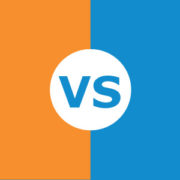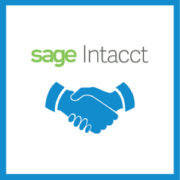Finance’s Guide to the Suite vs. Best of Breed Debate
It’s a question that has caused a great deal of animosity between decision makers, challenged project teams, and hurt software implementation projects over the past four decades. Highly politicized and often subject to technological shifts, the suite vs. best of breed/best-in-class debate has raged on since the 1970s at businesses of all sizes, industries, and missions.
History of the Suite vs. Best of Breed Debate
The Early Days: Suite 70s, Unique 90s
In the 70s and 80s, the idea of a suite was novel, and its promise was revolutionary: Bring as many applications as possible into one single management source. But as time passed and technology improved, the 90s brought with it a new idea—find the best application for each job, even if it meant at the time) that organizations saw additional complexity bringing together applications. Just as neon colors and hair metal gave way to grunge rock, so began the first era of the best of breed application.
The Dot-Com Burst Creates Demand for Stability and Centralization
Unfortunately for best of breed applications, the new millennium brought with it its own Y2K moment—the dot-com bubble burst. With many of these applications still young, investor confidence in nascent companies tanked, meaning the largest-sized, publicly traded innovators of the 90s were either bought out or brought down.
As noted in an article by Jim Shepherd, Vice President and Distinguished Analyst at Gartner,
“The best of breed strategy was last in the ascendancy in the late 1990s, but then the collapse of the internet bubble and the subsequent recession seemed to shift prevailing IT sentiment toward centralized control and single-vendor suites.”
This pushed buyers to either start working with the company who bought the application or select another well-established vendor for software (for example, SAP grew its revenues by 17% in 2001 and by 19% in 2002). Once again, the conversation went from “best of breed vs. suite” to “Operations wants SAP, but finance wants Oracle.”
The Rise of the Cloud and the Shift in Discussion
The reign of suites was once again challenged in the mid-to-late-aughts (2000s) when best of breed applications built in the cloud began to once again prove their worth. Companies like Intacct and Salesforce which were built in the 90s grew quietly through the dot-com crash and began to turn heads with promises of anytime, anywhere access and feature-focused, rapid updates.
Today: Best of Breed has its Day in the Sun
This momentum continued into the 2010s, when the concept of the cloud moved from “risky consideration” to “business game changer,” and these best of breed applications hit their stride, as noted by Wall Street Journal contributor and Bessemer Venture Partners partner Byron Deeter in his 2013 article, Best of Breed Applications Finally Have Their Day:
“After more than a decade of software industry consolidation and the dominance of “all in one” software suites, it is becoming increasingly difficult to justify a suite purchase. Business users were previously forced to accept inferior products in the interest of “seamless integration and simplicity”…that never materialized.
Deeter goes on to note the following changes that positioned best of breed applications—especially cloud-based ones—as those driving the conversation through this decade:
- Integration is No Longer a Challenge: The cloud, with its open, flexible SOA-based application architecture means that integration is far easier and cheaper to manage today. As cloud computing has matured, so has the “API economy.” SaaS vendors can now extend their application’s usefulness through releasing APIs to developers, who in turn then offer rich, complementary functionality back to joint customers.
- No More Server Space Pains: In the cloud, the Internet becomes the middleware. A company can pick and choose applications from many different vendors, integrate them through APIs or third-party cloud integration services and have the suite they always wanted in weeks, not years.
- Capital Expenditures give Way to Operating Expenses: With subscription-based pricing, costs of a cloud-based business product combination are also lower and more aligned with actual demand.
Free to Choose: Liberate Your Business with Best of Breed
When push comes to shove, the real question is this: Would you rather your business a one-size-fits-all platform that meets the basic needs of every department, or would you rather “build your own suite” of applications that play well with each other, are implemented when and where you need, exceed the expectations of each department, and allow your business to meet its goals and leaders to focus on growth?
If you’re a fan, we’d love to talk. rinehimerbaker is a trusted reseller of Intacct products to meet your organization’s financial management needs, as well as a reseller of a host of applications like Tallie, Bill.com, MineralTree, and Gusto. Better yet, we also provide integration services to connect Intacct and applications like Salesforce or Concur. Contact us to learn more.
Learn more about your journey to new accounting software in the cloud by downloading the Buyer’s Guide to Accounting Software, and reading the Intacct blog, Application Suites vs. Best of Breed Solutions.







Leave a Reply
Want to join the discussion?Feel free to contribute!